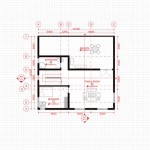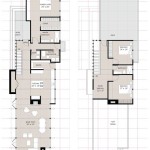Why Are There Suddenly So Many Planes Flying Over My House Today?
An unexpected surge in air traffic overhead can be unsettling and prompt questions about the reasons behind the change. While aviation routes are generally consistent, several factors can contribute to a noticeable increase in the number of planes traversing a particular area on a given day. Understanding these factors requires considering variables related to weather, air traffic management, special events, and even changes in the broader aviation landscape.
The perception of "suddenly" more planes is also important to address. It's possible that more planes are indeed flying overhead, or that a change in atmospheric conditions is making existing air traffic more noticeable. Sound travels differently based on humidity, temperature, and wind conditions, and these can significantly affect how loud aircraft noise is on the ground. Similarly, increased visibility might allow for a clearer view of planes that are typically imperceptible.
This article will explore the primary reasons behind apparent shifts in air traffic patterns and offer explanations for why heightened air traffic may seem to occur abruptly.
Weather-Related Rerouting
Weather plays a crucial role in air traffic management. Airlines and air traffic controllers prioritize safety above all else, and significant weather events often necessitate rerouting aircraft. Thunderstorms, strong winds, heavy rain, snow, and even fog can create hazardous flying conditions. To avoid these conditions, air traffic controllers may direct planes onto alternative routes, which may include flying over areas that typically experience less air traffic.
For example, a large thunderstorm cell moving across a major air corridor can force planes to deviate around it. This deviation can concentrate air traffic along the edges of the storm, causing a perceived increase in air traffic over specific residential areas. Similarly, strong head winds at higher altitudes can lead to airlines adjusting flight paths to minimize fuel consumption and travel time, which could lead to more planes flying a slightly different route than usual.
Wind patterns are increasingly important for air travel. Jet streams, high-altitude currents of air, can significantly affect ground speed and fuel efficiency. Airlines constantly monitor wind patterns and adjust flight paths to take advantage of favorable winds. These adjustments can shift flight paths, leading to more planes flying over certain areas on days with specific wind conditions. Changes to jet stream location can occur quickly, leading to unexpected changes in air traffic patterns.
Even seemingly minor weather phenomena can have an impact. Low cloud cover can restrict visibility near airports, requiring planes to approach and depart at steeper angles. This can concentrate air traffic closer to the airport and potentially over nearby communities. Similarly, icing conditions can affect aircraft performance, prompting airlines to adjust flight paths to avoid areas where icing is likely.
It is important to remember that weather is constantly changing. Meteorologists provide forecasts to air traffic control facilities, and airline operations departments are continuously reviewing these forecasts for potential flight disruptions. These plans rely on dynamic weather models, meaning diversions from a standard routes can happen fairly quickly and unexpectedly, if a weather system suddenly develops or shifts course.
Air Traffic Management and System Optimization
Air traffic control (ATC) is a complex system designed to manage the safe and efficient flow of air traffic. ATC facilities constantly adjust flight routes and altitudes to optimize airspace utilization and minimize delays. These adjustments can sometimes lead to changes in air traffic patterns over specific areas.
One common reason for air traffic pattern changes is runway configuration at airports. Airports often have multiple runways, and the active runway configuration depends on wind direction and other factors. When the active runway changes, the arrival and departure paths also change, which can shift air traffic over different areas. For instance, if the wind shifts and requires a runway change, planes that previously approached from one direction may now approach from a different direction, leading to a perceived increase in air traffic over a different residential area. Air traffic controllers work off this guidance from a station meterologist.
Demand for airspace also plays a role. During peak travel times, air traffic controllers may implement flow control measures to prevent congestion. These measures can include delaying flights, rerouting flights, or assigning different altitudes to aircraft. These actions can shift air traffic patterns and potentially lead to more planes flying over certain areas. Air traffic volume fluctuates depending on seasonal travel patterns, time of day, and special events.
Technology upgrades to air traffic management systems can also affect flight paths. The implementation of new navigation systems and procedures, such as Performance-Based Navigation (PBN), can lead to more precise flight paths and potentially concentrate air traffic along specific routes. While these upgrades are designed to improve efficiency and reduce delays overall, they can sometimes lead to unintended consequences, such as increased air traffic over certain areas. These technology shifts are often gradual, but a specific change in programming may have an immediate affect on the routes flown. Air traffic planning is a constant, evolving process.
Furthermore, military training exercises or other special airspace activities can also affect civilian air traffic. Air traffic controllers must coordinate with military authorities to ensure the safe separation of civilian and military aircraft. This coordination can sometimes require rerouting civilian flights around restricted airspace, which can lead to changes in air traffic patterns over surrounding areas.
Special Events and Temporary Flight Restrictions
Special events, such as major sporting events, concerts, or political gatherings, can generate a significant increase in air traffic. People traveling to these events often fly into nearby airports, leading to a surge in arrivals and departures. This increased air traffic can translate into more planes flying over residential areas near the airport.
In addition to increased travel, special events can also lead to the implementation of Temporary Flight Restrictions (TFRs). TFRs are airspace restrictions put in place for safety or security reasons. They can prohibit or restrict flight operations over a specific area during a specific period of time. TFRs are often implemented over stadiums, arenas, or other venues hosting large events. When a TFR is in place, air traffic controllers must reroute flights around the restricted airspace, which can lead to changes in air traffic patterns over surrounding areas.
TFRs are not limited to large events. They can also be implemented for security reasons, such as protecting critical infrastructure or government facilities. For example, a TFR might be put in place over a nuclear power plant or a military base. These TFRs can also affect civilian air traffic patterns, forcing planes to fly alternative routes. The FAA publishes information about TFRs, so it is possible to research if any TFRs are in effect that might be diverting air traffic.
During major events, the surge in air traffic can overwhelm local airports. Airlines may need to operate additional flights or use larger aircraft to accommodate the increased demand. This can lead to more frequent takeoffs and landings, as well as more planes flying over residential areas near the airport. The effect of a temporary event on local flight patterns is usually short-lived, but can feel significant during the event itself.
The coordination of air traffic around special events requires careful planning and communication between air traffic controllers, airlines, and event organizers. The goal is to ensure the safe and efficient flow of air traffic while minimizing disruptions to the surrounding communities.
In summary, the reasons for a sudden increase in planes flying overhead are varied and often interconnected. Weather, air traffic management practices, and special events each play a significant role in shaping air traffic patterns. Understanding these factors can provide valuable insight into why air traffic may seem to shift unexpectedly.
Why Are There So Many Planes Flying Over My Neighborhood Does It Seem Like More In The Sky Now Than Ever Before Quora
Why Are The Military Jets Flying Over My House For Hours When Air Show Doesn T Start Until This Weekend Is Not Practice Quora
I Had About 30 Planes Flying Over My House Today Leaving One Streak Of White Lines Is It Crazy To Have That Many At Once Quora
Why Are The Military Jets Flying Over My House For Hours When Air Show Doesn T Start Until This Weekend Is Not Practice Quora
Why Are The Military Jets Flying Over My House For Hours When Air Show Doesn T Start Until This Weekend Is Not Practice Quora
When Air Force Jet Fighters Fly Over Your Town Home Etc Loudly Likely Training And Or Practicing What Are Thoughts Quora
Why Would A Fighter Jet Be Flying Over City Late At Night Quora

Why Are Military Helicopters Flying Over My House Fully Explained

What Plane Just Flew Over My House Here S An Easy Way To Find Out

What Plane Just Flew Over My House Here S An Easy Way To Find Out
Related Posts








